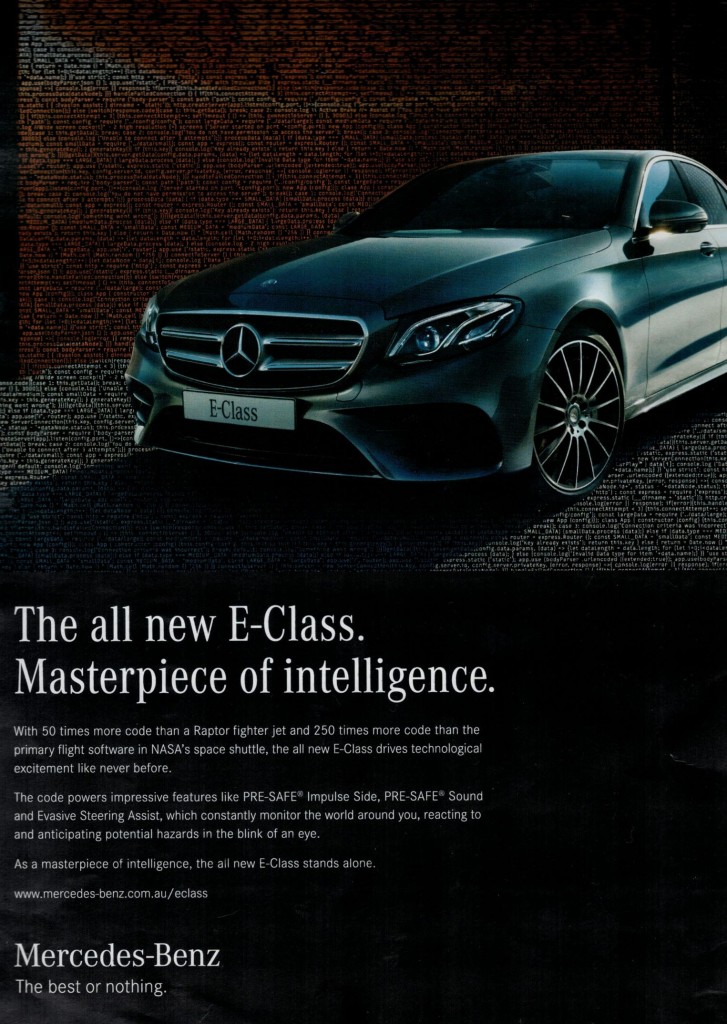Too Much Technology
In Australia, Mercedes is advertising the new C Class as: “100 million lines of code. One groundbreaking vehicle.”
It’s possibly not a good thing that an average car has ’50 times more code than a Raptor fighter jet”.
The American Automobile Association (“AAA”) has reported that 2015 was a record year for breakdowns. And the main reason- technology. An example: keyless technology flattening batteries and locking people out of their cars.
In the past few years we have had:
- Toyota cars accelerating of their own volition
- Same for Jeep Cherokees
- Tesla autopilot crashes
Superior drivetrains and other advancements in modern cars are being undermined by technology. The same applies to heavy trucks. Truck drivetrains are good for many hundreds of thousands of kilometers, but the technology is not. Sensors, such as for fuel efficiency, are much more likely to die than the drivetrain. But, nonetheless, the truck is still disabled until a failed senior is replaced. Just Imagine that you are disabled in a remote, hot area with a refrigerated load. All because of a $100 sensor failure.
And the ubiquitous “internet of things”. Of course, everyone wants to talk to their air conditioner, oven, coffee maker and so on. And what about a smart phone controlled pet feeder, such as Petnet. Sounds great, but when its servers go offline, and they do, your pets go hungry.
There are many more examples, but my point is that more code, more technology, is not necessarily better. Code tends to be written, and then patched and patched. After several iterations of patches, unintended consequences can often appear.
Complex systems that are barely, if at all, understood by humans, are a recipe for disaster. It is happening now, and there is not yet a solution.

